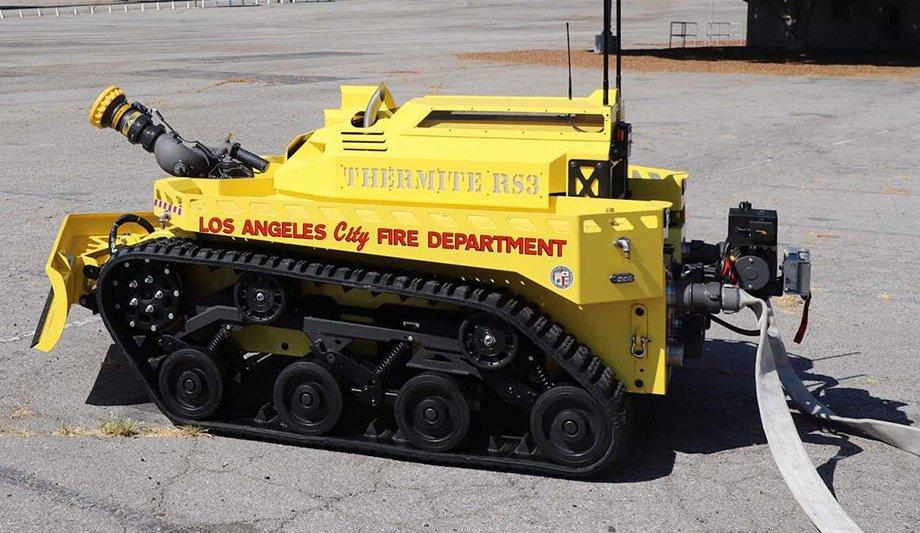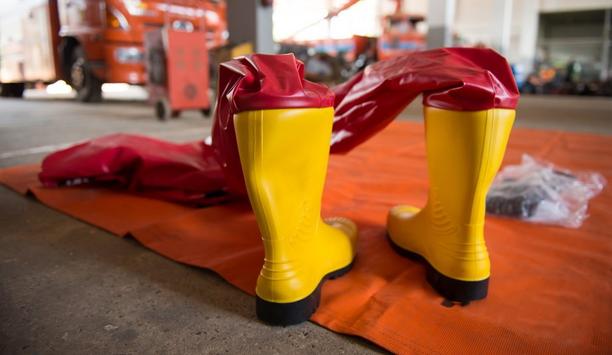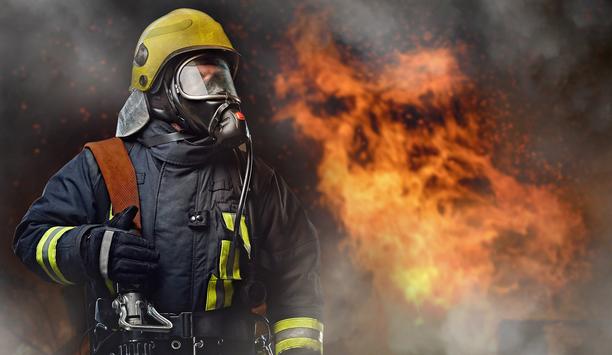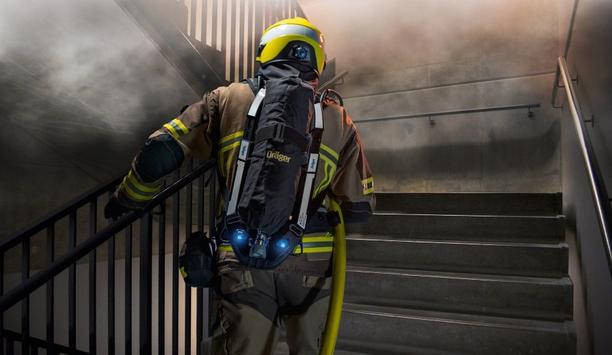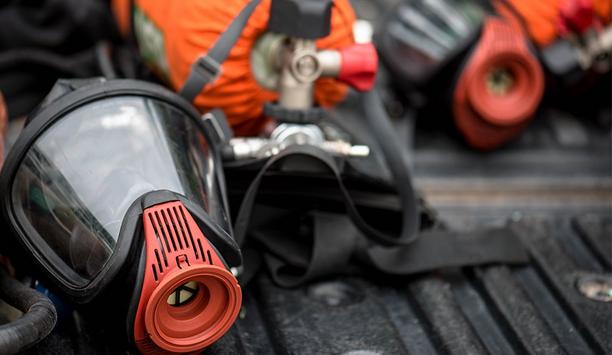The Thermite RS3, manufactured by Howe & Howe Technologies, is a wide-chassis, industrial firefighting robot that is remotely operated using a belly-pack controller to provide high-definition video feedback for easy maneuverability, even in difficult conditions. The Los Angeles City Fire Department was the first to buy the bright yellow firefighting vehicle, as announced last fall.
Thermite RS3 robot
Decon7 Systems has teamed with Howe & Howe Technologies to pioneer the delivery of D7 disinfecting formula
The robot is also being used in a new way during the COVID-19 pandemic. Decon7 Systems has teamed with Howe & Howe Technologies to pioneer the delivery of D7 disinfecting formula, using the RS3 to spray the disinfectant as foam, in order to ensure large areas are free of the coronavirus (COVID-19).
The configuration is another way that a variety of items are being repurposed for new uses in the time of the pandemic, ranging from scarves used as face masks to kitchen tables that double as desks in a virtual schoolroom. In this case, a robot, which costs upwards of US$ 300,000, is providing a new way to carry out large-scale disinfecting operations of public places.
Combination of D7 disinfectant and Thermite RS3
As COVID-19 pandemic restrictions ease and more public events are contemplated, the combination of D7 and the Thermite RS3 to disinfect and clean large areas will be relevant to communities and facilities across the country.
“The combination of Thermite RS3 technology and D7 foam opens the door to new methods of quickly and safely deactivating the COVID-19 virus in public spaces,” said Decon7 Systems’ Senior Vice President, William Joe Hill.
Thermite and D7 provided a demonstration of the new capabilities. “We hope to show the significance of this capability to facility maintenance operators and first responders, including firefighters, law enforcement and emergency services teams, all across the country,” adds William Joe Hill.
Positive pressure ventilation (PPV) ventilator
The RS3’s modular design and wider stance allow additional equipment to be incorporated, including positive pressure ventilation (PPV) ventilator. In the disinfectant use case, two nozzles spray the disinfectant from the robot. One is controllable and can spray a sidewalk as the robot travels down the road, for example.
The second nozzle feeds into the airstream of a PPV ventilator fan system, where it is jetted at 20 gallons per minute to get the right foaming action of the solution. A tow-behind trailer includes a pump to provide pressure without connecting to an outside water source.
Large-scale disinfection operations
When used in firefighting, the Thermite RS3 avoids having to deploy firefighters into extreme conditions
When used in firefighting, the Thermite RS3 avoids having to deploy firefighters into extreme conditions. The RS3 enables firefighters to respond at a safer distance from danger, while using the robot as an extension of their own senses.
The same advantages also drive new usage arenas such as COVID-19 disinfection, toxic chemical remediation, and biohazard disinfection. Large-scale disinfecting operations can be achieved without putting personnel in harm’s way. The RS3’s hose attachment enables users to spray large areas with disinfectant efficiently.
D7 broad-spectrum antimicrobial disinfectant
D7 is a broad-spectrum antimicrobial disinfectant that is versatile for a host of applications. It capitalizes on the power of hydrogen peroxide, penetrating and disarming toxins at the molecular level. The D7 formulation is made up of mild ingredients, which gives it low toxicity and corrosion properties.
Fabricated using industrial-grade steel and reinforced rubber tracks, RS3 can navigate rugged terrain and withstand exposure to the extreme elements. Its 36.8 hp diesel engine can run 20 hours without refueling. The control device, strapped around the waist of the operator, has a range of a quarter mile away.
